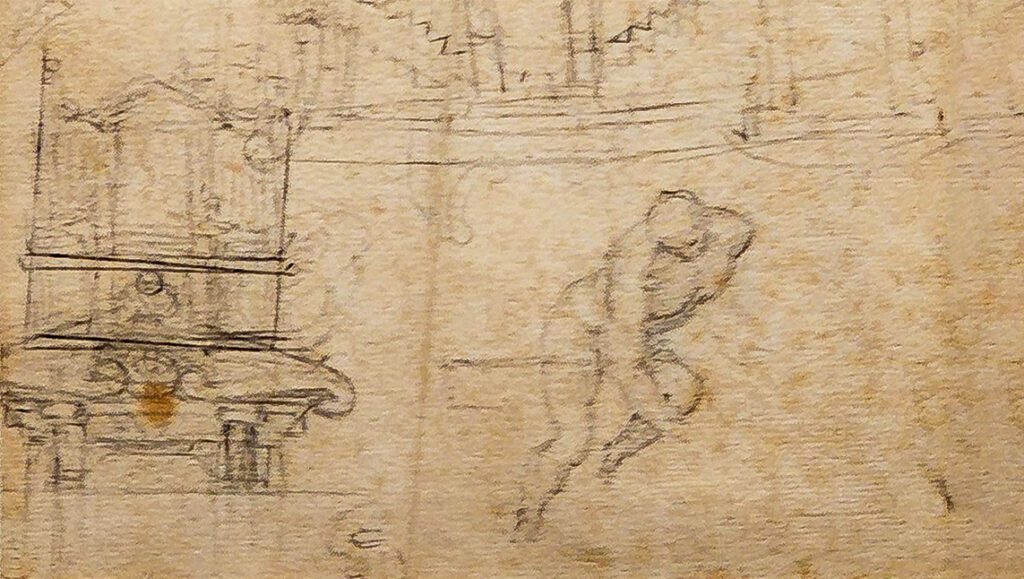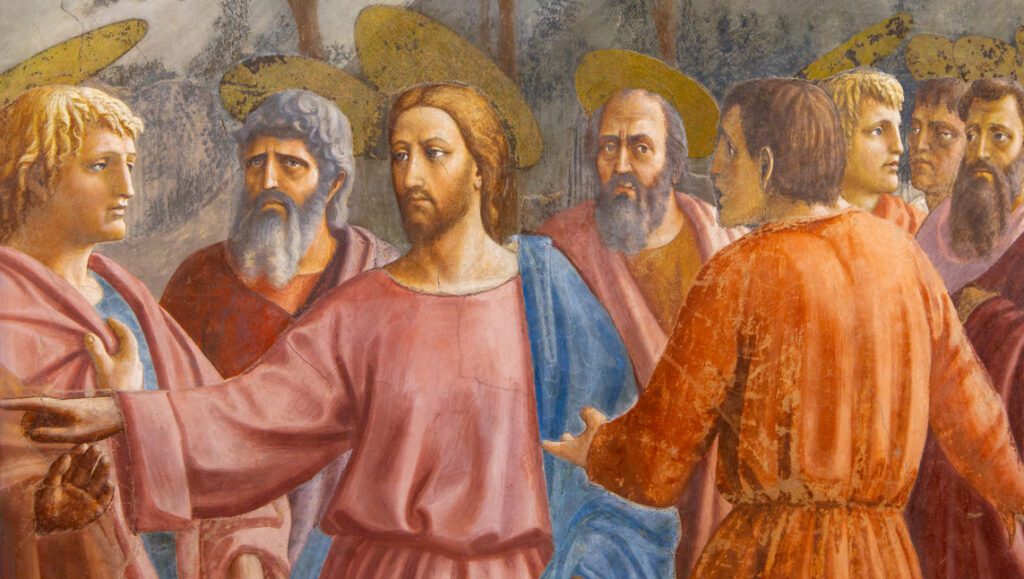
The façade of the Santa Maria Novella church and its hidden symbols
A finely decorated marble façade, the only properly Renaissance one of a sacred building that we can see in the city of Florence. We are talking about the façade of the Santa Maria Novella Basilica, one of the most important churches in the town. Its centuries-old history and the religious importance of this pearl make it a not to be missed monument in the experience of visiting the town of the lily, especially if you want to escape from conventional tourist routes.
In addition to the beautiful interior with a considerable number of places and preserved works, such as the so-called “green cloister”, the large cloister, the Capellone degli Spagnoli, the refectory with frescoes by Paolo Uccello, it is above all the facade that really deserves special attention.

The sail blown up by the wind represented on the Santa Maria Novella façade
A strange sail blown up by the wind
The glow of the white marble and the geometric green marble inserts from Prato, refined and elegant, distract the most superficial observer from what are the ‘hidden’ symbols of the facade of the Basilica of Santa Maria Novella, extremely interesting elements that are inherent in the details: starting with the most recurring one, which paradoxically can be mistaken for a decorative element given its repetition and a shape similar to a large letter “C”: I’m talking about the image of a sail.
Well, this is already something that begins to intrigue a lot: what does a sail, represented inflated by the wind, in an environment like Florence, where we are far from the sea? This image is not linked to the sea properly, nor to particular seafaring enterprises: it is rather the manifestation of a desire, or we could say an ambition, something that in any case has a lot to do with sailing. Was that a wish expressed by whom?
Behind the ‘hidden’ symbols of the precious marbles of the Santa Maria Novella Basilica façade there is the will of a client being part to one of the most prestigious families in mid-fifteenth-century Florence, the Rucellai family.
Giovanni Rucellai, an interesting Florentine merchant
It was in fact Giovanni Rucellai, a member of this merchant family, who commissioned this work in those years of the second half of the fifteenth century; looking at the tympanum of the façade, it is possible to read his Latin name – Iohannes – together with a date in Roman numerals corresponding to the year 1470.
Once the client’s identity has been revealed, there are still several elements to observe and decipher on the Santa Maria Novella façade. A little higher than the inscription, in the centre of the tympanum, it is possible to notice a white marble sun, inlaid in a background of green Prato marble. This other intriguing image, which immediately reminiscent of something esoteric or alchemical, is linked to the order of friars who still take care of the church today: the Dominicans. But what is the symbolism connecting the sun with the Dominican Order?
Some astronomic objects on the façade
Always remaining in the so-called alchemical theme, if we go forward we see that on the right of the façade, a protruding marble slab that is that of a sundial; then on the left it is possible to notice a bronze armillary sphere. While that of the sundial is a fairly common object in many ancient buildings, an armillary sphere is an item much more rarely found in front of a building, even stranger it is seen here before a church. Few people know these two astronomic elements are closely related, also because they date back to the same period and were also installed because of the will of the same person.
A friar scholar of astronomy
Who was the person who had the sundial and armillary sphere installed? It is a Dominican with a particular name: Egnazio Danti; his surname came from a great passion he had for Dante Alighieri. Egnazio lived in the second half of the sixteenth century and, although his was not a famous name like that of other eminent scientists, such as Galileo, his contribution was actually fundamental to arrive at the calendar that we still use today.
What did Egnazio Danti do for the calendar, that we still know in this day as “Gregorian”? What does the name of the calendar have to do with this astronomy scholar?
There are many enigmas and secrets that, as you can see, are hidden behind the of Santa Maria Novella Basilica façade; imagine what else equally fascinating is concealed inside the building, such as the particular name of a cloister, the one adjacent to the church, called the “green cloister“, or the chapel called “of the Spanish”.
So, I wait for you to go and discover together the hidden symbols of the Santa Maria Novella Basilica with a guided tour.



